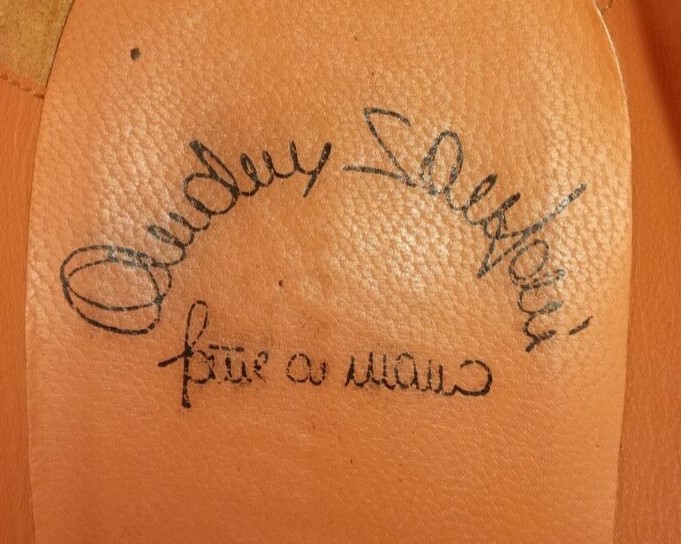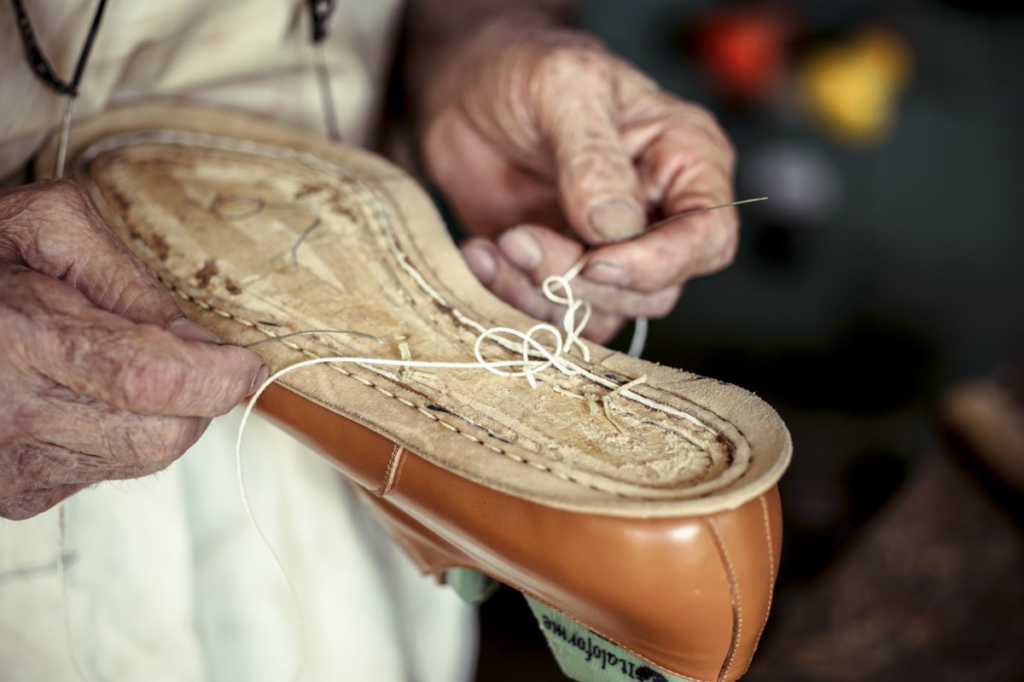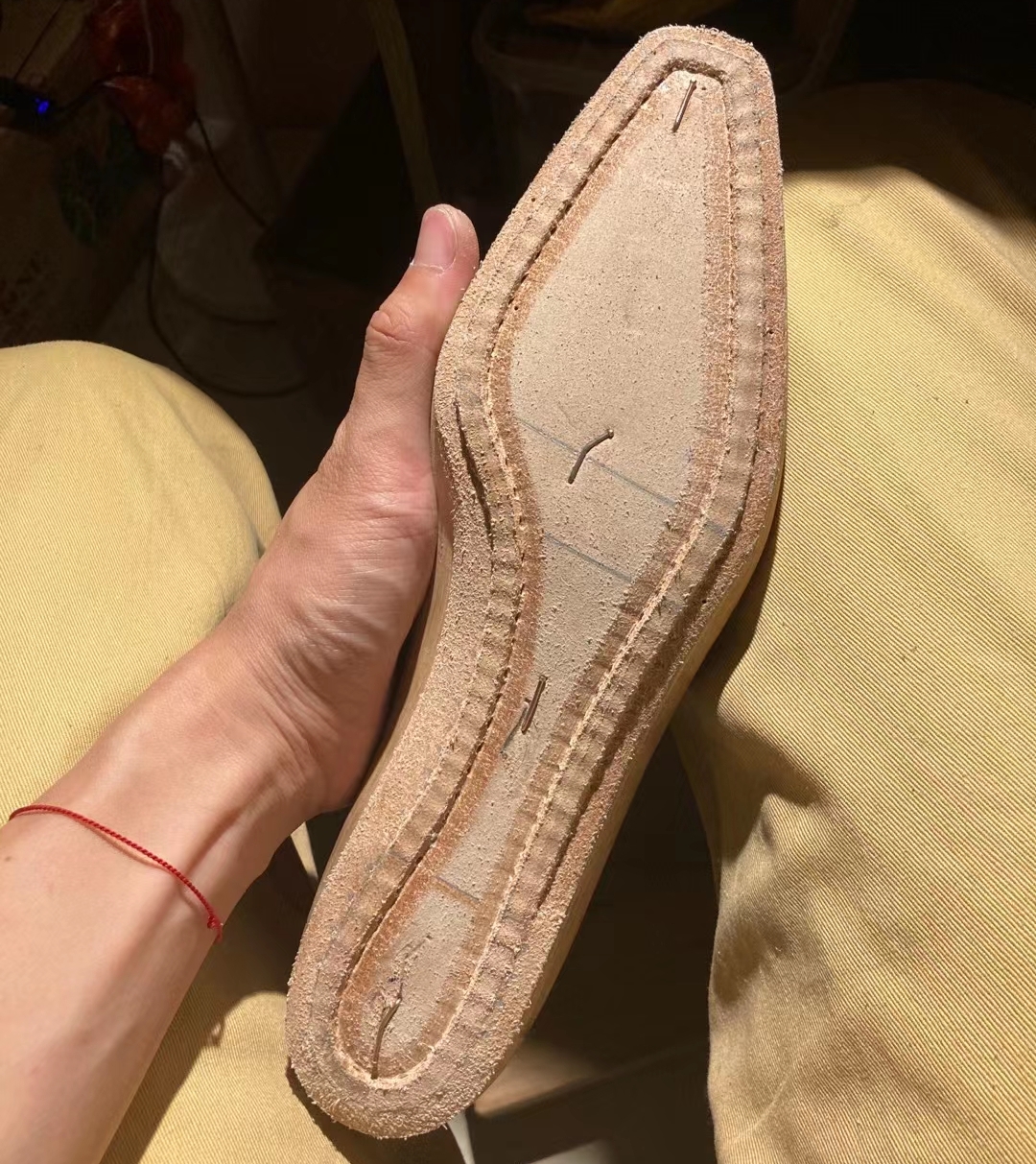Goodyear is a construction of classic dress shoes, probably due to the publicity that traditional British shoemakers used, mentioning the royal family, aristocrats and so on. As seasoned enthusiasts, we are very contemptuous of this calibre of publicity, but the mass public love these words.
These UK brands all use Goodyear construction, which makes it possible for people to default to the idea that a stitched shoe is Goodyear welted. From this point of view, it has to be lamented that whoever gets the media gets the world.
Which country is the leading manufacturer of sewn shoes, Britain or Italy? In terms of production and sales volume, Italy definitely wins. In Italy, we can’t say that there is no Goodyear construction, but it is always in a subordinate position. That is to say, they essentially favoured Blake stitching and Italian Goodyear technology (we will talk about what Italian Goodyear means later).

Leave these two countries, we look round again in Europe.
The next big country in shoemaking is Spain, where Goodyear is the dominant. But Spain has always been a cost saving option to English shoe factories, so everything is benchmarked (followed, if you like this word) against the British brands.
France, Europe’s leading consumer of dress shoes, not so many brands have local production, I can think of just two, Corthay and J.M. Weston are made in France. Corthay is Goodyear welted, while we leave J.M. Weston alone and touch it later.
A host of other brands are either OEM in Spain, Portugal or Italy, and Blake construction percentage is probably higher than Goodyear.
Going to Central and Eastern Europe, you don’t see much Blake construction, and although that side is a traditional shoe-making region, industrialisation has gone badly, and it’s still basically handwelting.
Which brings us back to the title, when the Italians write Goodyear, they are most likely referring to handwelted.
French bespoke shoemaker Stephane Jimenez says that the name Goodyear, when used with canvas strips, is tarnished!
The Goodyear construction was not invented by the American Charles Goodyear Jr (son of the founder of the Goodyear tyre company), but it was developed by him. The process was introduced to replace handwelting with a machine.
In this Goodyear process, there is no canvas strip present. The method is still to wall up the midsole (the core is shovelled thin and the circle around it is like a ring of ramparts, hence the wall) and then the leather is sewn along the welt on top of this wall.

So it sounds like it’s just hand sewing turned into machine sewing?
No, the answer is that hand sewing is a form of interlocking and machine sewing is not.

But in any case, a hand-sewn circle became a machine-turned circle, which was vastly more efficient.
Efficiency improvement never stops, the wall was targeted then.
Hollowing out the centre of the leather base is also very time-consuming, I want this circle of the wall, just stick a circle on it, is it much easier?
At the beginning, it was leather strip that was glued onto the midsole, then gradually retreated to canvas (reduced the cost). That is what we call Goodyear construction today.
According to this history, we can think of the current Goodyear process as Goodyear 2.0.
In terms of durability, the canvas strips can’t be compared to leather on toughness, and when you add in the fact that the wall of the midsole is one piece with the body, whereas the canvas strips are glued on, the end effect is even more obvious.
Currently, there are not many brands still using Goodyear 1.0, the most famous, J.M. Weston, followed by Viberg in the U.S. An up and coming brand from India, Bridlen is among the good league.
I am quite curious about this kind of “walling” machine. Hope someday I have the opportunity to have a look.

